W
Showing all 12 results
-


Ashwagandha – अश्वागंधा – Winter cherry – Withania somnifera
₹160.00 – ₹1,285.00Quick ViewAshwagandha | Winter cherry
Scientific Name : Withania somnifera. | Part : Dried roots
Ayurvedic Classification Description Sanskrit Name Ashwagandha (अश्वगंधा) English Name Winter cherry, Indian ginseng Botanical Name Withania somnifera Family Solanaceae Parts Used Roots, leaves Taste (Rasa) Bitter (Tikta), astringent (Kashaya), sweet (Madhura) Energy (Virya) Heating (Ushna) Post-Digestive Effect (Vipaka) Sweet (Madhura) Dosha Effect Balances all three doshas (Vata, Pitta, Kapha) Tissue (Dhatu) Affinity All tissues, especially nerve and reproductive tissues Channel (Srotas) Affinity Respiratory, reproductive, and nervous system Action (Karma) Rejuvenative (Rasayana), adaptogenic, calming (Sattvic), immune-stimulating, aphrodisiac, cognitive enhancer (Medhya Rasayana) Active compounds and benefits of Ashwagandha:
Active Compounds Benefits Withanolides Anti-inflammatory, anti-tumor, immunomodulatory, neuroprotective, anxiolytic Alkaloids (such as somnine and somniferine) Sedative, analgesic, smooth muscle relaxant, anti-inflammatory Saponins (including sitoindosides) Adaptogenic, anti-stress, immune-boosting, anti-inflammatory Amino acids (including tryptophan) Calming, anti-anxiety Choline Cognitive enhancer, memory improvement Iron Nutritional support for healthy blood cells -
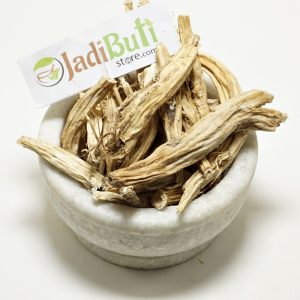

Behman safed – बहमन – White Behen – Centaurea behen Linn
₹140.00 – ₹965.00Quick ViewBehman safed – बहमन – White Behen – Centaurea behen Linn.
Behman safed Name in different languages:
Behman safed English Name : White Behen
Behman safed Hindi Name : Safed Behman
Behman safed Latin name : Centaurea behen Linn.
Behman safed Urdu Name : Behman Safed
Behman safed Arabic Name : Bahman Aswad
Behman safed French Name : Behen Blanc
Behman safed German Name : Behenflockenblume, Rübendistel
Behman safed Persian Name : Behman Safed
-


Chitrak – चित्रक – White Leadwort – Plumbago zeylanica
₹160.00 – ₹1,250.00Quick ViewChitrak – चित्रक – White Leadwort – Plumbago zeylanica .
Chitrak Name In Different Languages:
Chitrak English Name : Ceylon Leadwort, White Leadwort
Chitrak Hindi Name : Chitra, Chita, Chiti, Chira, Chitta
Chitrak Latin name : Plumbago zeylanica Linn.
Chitrak Urdu Name : Cheetalakdi, Sheetraj
Chitrak Arabic Name : Sheetraagh, Shitraak Hindee, Ghashwa
Chitrak Bengali Name : Chita, Chittu
Chitrak French Name : Dentelair de Ceylon
Chitrak German Name : Bleiwurz, Ceylon-Bleiwurz
Chitrak Gujarati Name : Chitro, Chitra, Pitro
Chitrak Kannada Name : Chitramula, Vahni, Bilichitramoola
Chitrak Kashmiri Name : Chitra, Shatrajna
Chitrak Marathi Name : Chitrak, Chitramul
Chitrak Persian Name : Sheetrah, Shatraj
Chitrak Punjabi Name : Chitra, Chitrak
Chitrak Sanskrit Name : Chitraka, Dahana, Agni, Vahni, Hutabhuk
-
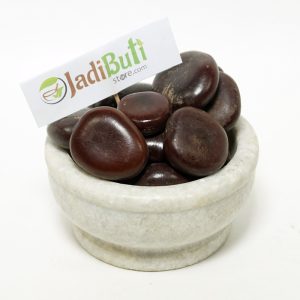
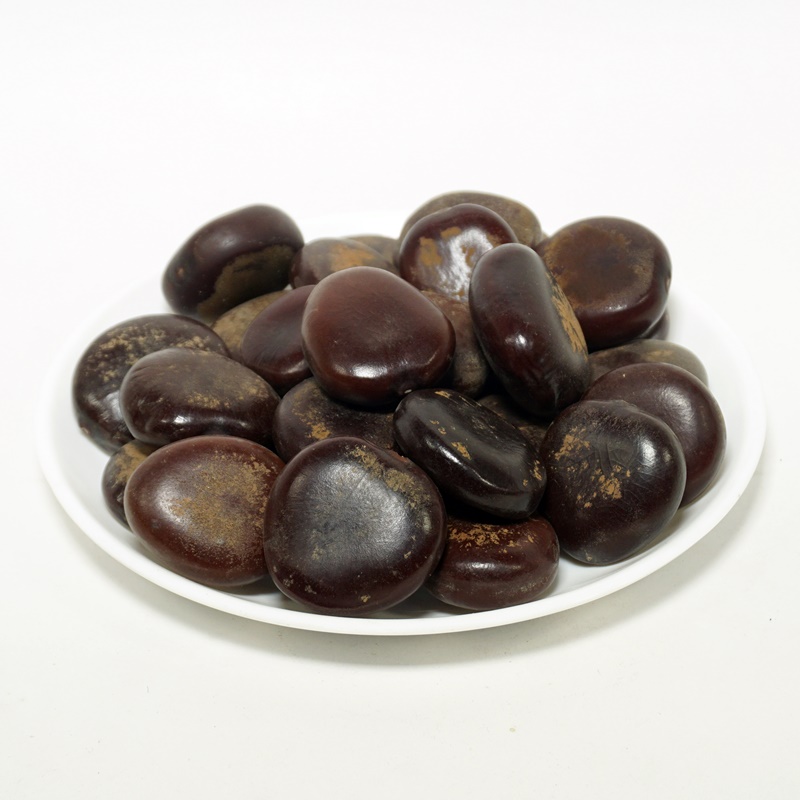
Imli Beej Pahadi – इमली बीज पहाड़ी – Wild Tamarind Seeds – Tamarindus Indica
₹270.00 – ₹1,920.00Quick ViewImli Beej Pahadi – इमली बीज पहाड़ी – Wild Tamarind Seeds – Tamarindus Indica.
Wild Tamarindus Indica (Tamarind):
Ayurvedic Classification Description Rasa (taste) Sour Guna (qualities) Light, dry, rough Virya (potency) Cooling Vipaka (post-digestive effect) Sweet Dosha effect Balances Pitta dosha, may aggravate Vata and Kapha doshas Karma (actions) Carminative, laxative, cooling, digestive, antipyretic, antimicrobial, anti-inflammatory Dhatu (tissue) affinity Works primarily on the plasma, blood, muscle, and fat tissues Srotas (channel) affinity Works primarily on the digestive, circulatory, and urinary channels Prabhava (special effect) Helps to balance digestive fire (agni), supports healthy digestion -
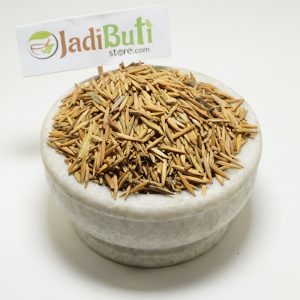
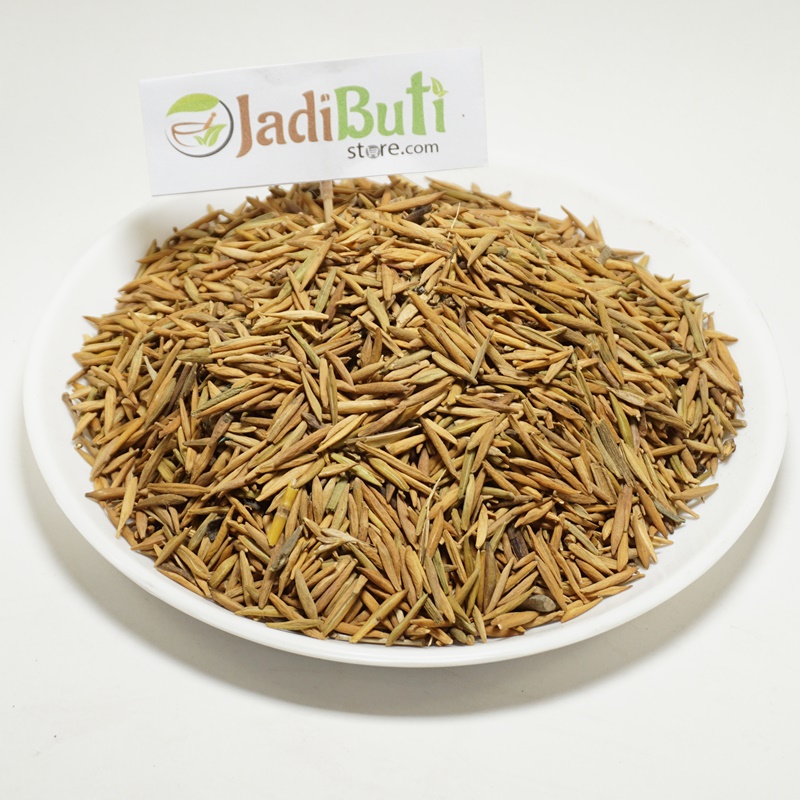
Inderjo Meetha – इन्द्रजौ मीठा – Sweet lndarjao – Wrightia tinctoria
₹110.00 – ₹845.00Quick ViewInderjo Meetha – इन्द्रजौ मीठा – Sweet lndarjao – Wrightia tinctoria.
Inderjo Meetha Name in different languages:
Inderjo Meetha English Name : Sweet lndarjao, Easter Tree, Ivory Tree
Inderjo Meetha Hindi Name : Safed Kuda, Metha Kuda, Khinna, Kutaja
Inderjo Meetha Latin name : Wrightia tinctoria R. Br.
Inderjo Meetha Urdu Name : Indarjao Shirin
Inderjo Meetha Bengali Name : Indrajav
Inderjo Meetha Chinese Name : Tao tiao pi
Inderjo Meetha German Name : Färber-Oleander
Inderjo Meetha Gujarati Name : Mitha Indarjava, Gode Indarjava
Inderjo Meetha Kannada Name : Kiridosige, Kodamurki, Hale
Inderjo Meetha Marathi Name : Mitha Indarjava, Gode Indarjava
Inderjo Meetha Persian Name : Zaban Kunjashk
Inderjo Meetha Punjabi Name : Indarjao Mitha
Inderjo Meetha Sanskrit Name : Svetakutaja, Strikutaja, Kutaj Beej
-
Sale!

 25%
25% Musli (Safed Musli) – सफ़ेद मूसली – White Musale – Chlorophytum Borivilianum
₹340.00 – ₹3,020.00Quick ViewSafed Musli | Musli White
Chlorophytum borivilianum | Product : Dried Musli Organic
Ayurvedic Classification Description Rasa (taste) Sweet, bitter, and pungent Guna (qualities) Guru (heavy), snigdha (unctuous), and vishada (non-slimy) Virya (potency) Cooling Vipaka (post-digestive effect) Sweet Dosha effect Pacifies Pitta and Vata doshas Karma (actions) Adaptogenic, aphrodisiac, immunomodulatory, galactagogue, and antioxidant Dhatu (tissue) affinity Works primarily on the reproductive and nervous tissues Srotas (channel) affinity Works primarily on the reproductive and nervous channels Prabhava (special effect) Increases desire and performance Active compounds & benefits found in safed musli (Chlorophytum borivilianum):
Active Compound Benefits Saponins Aphrodisiac, adaptogenic, and immune-boosting properties Polysaccharides Immunomodulatory and anti-inflammatory properties Alkaloids Antioxidant and anti-inflammatory properties Flavonoids Antioxidant and anti-inflammatory properties Phenolics Antioxidant and anti-inflammatory properties Proteins and amino acids Essential for growth and repair of body tissues Vitamins and minerals Essential for overall health and well-being -
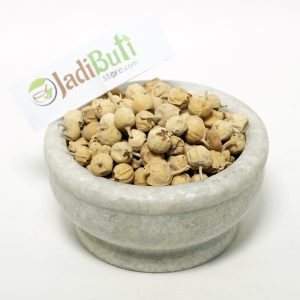
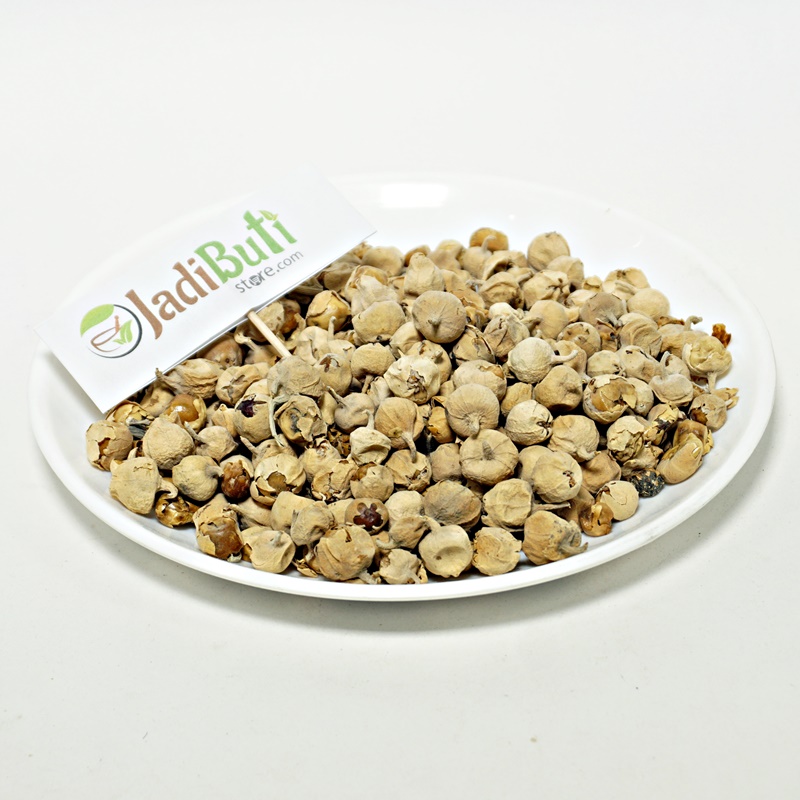
Paneer Doda – Tukme Hayat – Paneer Dodi – Withania Coagulans
₹110.00 – ₹825.00Quick ViewPaneer Doda | Paneer Dodi | Withania Coagulans.
Ayurvedic classification of Paneer Dodi (Withania coagulans):
Ayurvedic Classification Description Rasa (taste) Bitter, astringent, and sweet Guna (qualities) Light, dry, and sharp Virya (potency) Heating Vipaka (post-digestive effect) Sweet Dosha effect Pacifies Kapha and Vata doshas Karma (actions) Digestive, anti-inflammatory, anti-diabetic, immune-modulating, and anti-cancer Dhatu (tissue) affinity Works primarily on the digestive and respiratory tissues Srotas (channel) affinity Works primarily on the digestive and respiratory channels Prabhava (special effect) Helps to regulate blood sugar levels Active compounds and benefits of Paneer Dodi (Withania coagulans):
Active Compound Benefits Withanolides Anti-inflammatory, anti-cancer, immune-boosting, and adaptogenic properties Withaferin A Anti-inflammatory, anti-cancer, neuroprotective, and cardioprotective properties Coagulin Hypoglycemic, antidiabetic, and lipid-lowering properties Steroids (β-sitosterol, stigmasterol, and campesterol) Anti-inflammatory, antioxidant, and immune-boosting properties Flavonoids (luteolin, apigenin, and kaempferol) Antioxidant, anti-inflammatory, and anti-cancer properties -

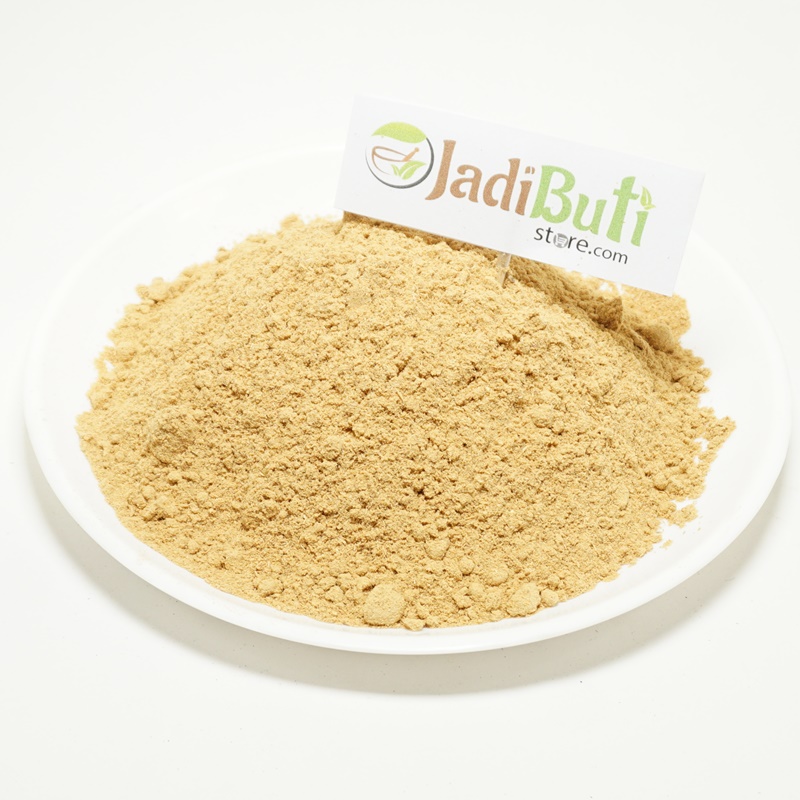
Safed Chandan powder – सफ़ेद चंदन – White Sandalwood powder – Pterocarpus santalinus
₹280.00 – ₹3,565.00Quick ViewWhite sandalwood powder is a fine powder made from the heartwood of the Santalum album tree, which is native to India and other parts of Asia. It has been used for centuries in Ayurveda, the traditional Indian system of medicine, as a natural remedy for various health and beauty conditions. White sandalwood powder is rich in antioxidants and has anti-inflammatory, antiseptic, and astringent properties. It is a popular ingredient in skincare, hair care, and medicinal products. It can be used to soothe and moisturize the skin, reduce acne and dark spots, promote hair growth, and relieve sunburn and inflammatory conditions. White sandalwood powder is also used in aromatherapy and meditation practices for its calming and grounding effects on the mind.
Ayurvedic Safed Chandan (White Sandalwood):
Ayurvedic Classification Description Rasa (taste) Bitter, astringent, sweet Guna (qualities) Light, dry, cool Virya (potency) Cooling Vipaka (post-digestive effect) Sweet Dosha effect Pacifies Pitta and Vata doshas Karma (actions) Cooling, soothing, anti-inflammatory, anti-bacterial, and anti-viral Dhatu (tissue) affinity Works primarily on the plasma, blood, and reproductive tissues Srotas (channel) affinity Works primarily on the respiratory, digestive, and reproductive channels Prabhava (special effect) Calming and cooling effect on the mind and body -
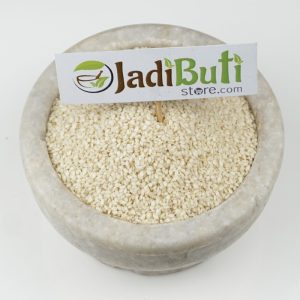
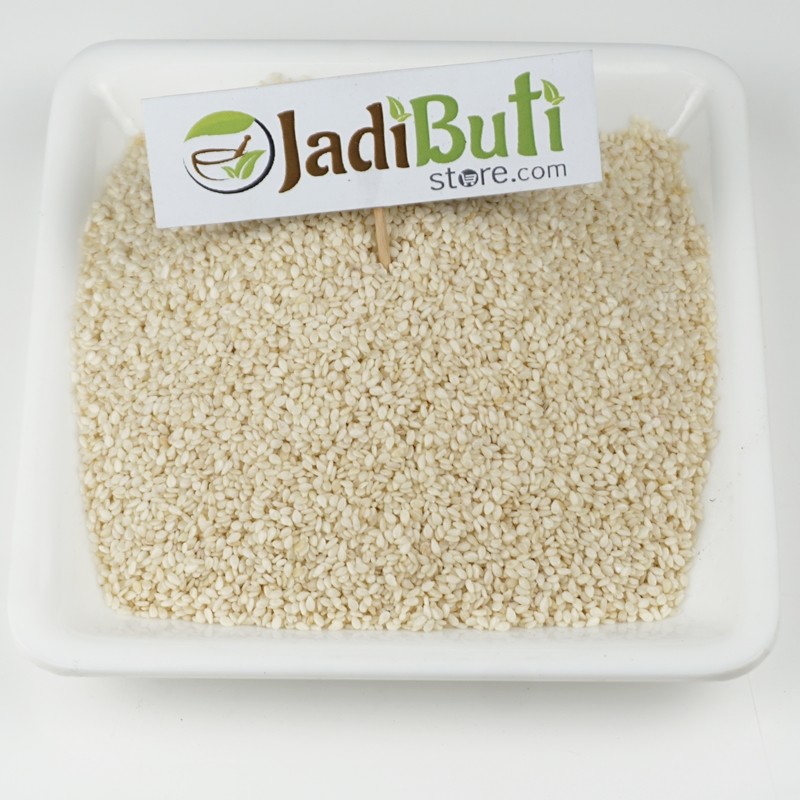
Safed Til – सफ़ेद तिल – WHITE SESAME SEEDS – SESAMUM INDICUM
₹120.00 – ₹890.00Quick ViewSafed Til – सफ़ेद तिल – WHITE SESAME SEEDS – SESAMUM INDICUM
Mostly, sesame is used with food in the winter season. There are three kinds of sesame according to color as- white, red and black. Mostly, black sesame is used in the medicines. Sesame and sugar are used to make rebri. It is grown in enough quantity in India. Sesame can be grown alone or with crop of cotton or cattail or myrabalan chebulie or groundnut. India is excellent place to grow sesame.
Sesame oil: Sesame oil is heavy, wet and warm in nature. It increases body strength, memory power, Wellness power and appetite. It helps in stool clearly and improves the skin color. It cleans and purifies the uterus. It normalizes vatta, pitta and kahpa. It is useful for the treatment of blood disorders caused by bile, diabetes, ears pain, Vulva pain and headache.
Name in different languages:
English : Gingeli sesame
Hindi : Til, Tilli ka tel
Sanskrit : Til, Tilli ka tel
Gujarati : Tal, Bheethu tel
Marathi : Til, Gouda tel
Bengali : Til
Parsian : Kunjand, Rogan kunjand
Arab : Sheeraj, Simsim, Samsam, Hul
Scientists : Setumun orintel
Color: white
Taste: Its juice is bitter, sweet, pungent and spicy.
Structure: One year’s plant of sesame is soft and hairy. Its tree is about 15-36 inches high. Its leaves’ upper part is simple, rectangle and in garland shape. Its leaves’ front part has lines and middle part is conical. Its leaves sides are divided in many parts like teeth. Its flowers are one and half inches long, purple, white and with yellow marks. Its pods are 2 inches long, quartern and front part is blunted.
Nature: Sesame is heavy, hot in nature and smooth. The light yellow liquid, which is extracted from sesame, is called sesame oil or sweet oil. Its offensive smell is interested. Its oil contains protein elements. Its seeds contain sisemolin, simemia, lypage, pradhanta, oitic, nicotinic acid, pamitic and linolic acid. Its seeds also contain styaric and glysraidus of arecidic acid in less quantity.
Precaution: Pregnant woman should not take sesame because it is very harmful for her.
-
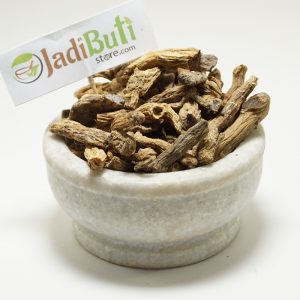
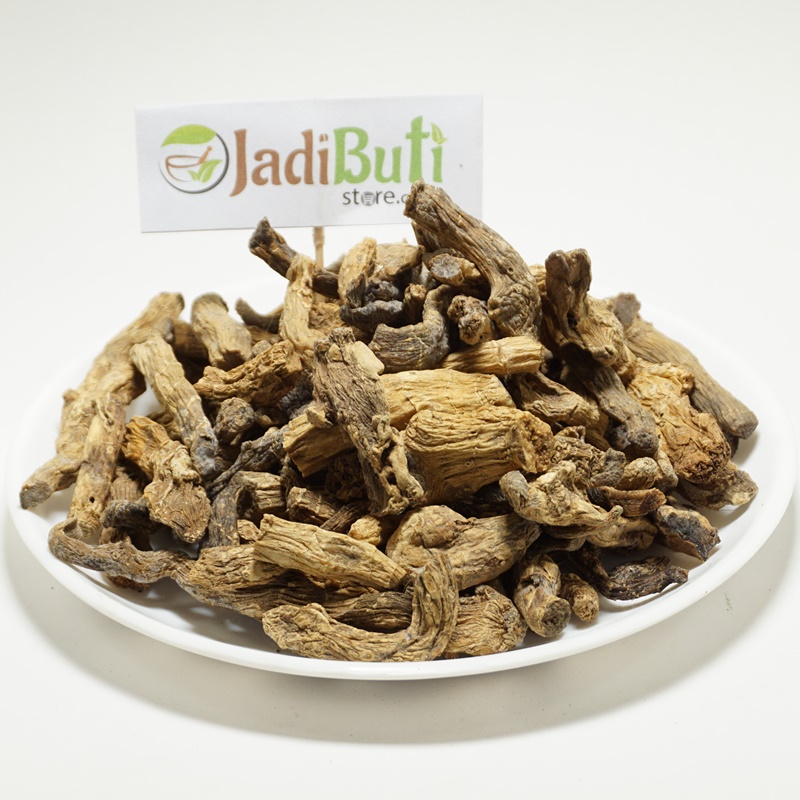
Shakakul mishri – शकाकुल मिश्री – Wild Parsnip – Pastinaca sativa
₹220.00 – ₹1,685.00Quick ViewCommon Name: Wild Parsnip
Scientific Name: Pastinaca sativa
Family: Apiaceae
Description: Wild Parsnip is a biennial or perennial plant that is native to Europe and Asia but has also been naturalized in North America. It can grow up to 5 feet tall and has a yellow-green stem with deeply divided leaves. The plant produces umbrella-shaped clusters of small yellow flowers in the summer. Its fruit is a small oval-shaped seed that is usually brown in color.
Uses: Wild Parsnip has some culinary uses and is often used as a medicinal herb. The root and leaves of the plant can be used in soups, stews, and other dishes. In traditional medicine, Wild Parsnip has been used to treat a variety of ailments, including indigestion, coughs, and rheumatism.
Toxicity: Wild Parsnip can be toxic due to the presence of chemicals called furocoumarins in its sap, which can cause skin irritation and sensitivity to sunlight. Contact with the sap can result in severe skin burns and blisters, similar to a severe sunburn. Therefore, it is important to wear protective clothing and gloves when handling or removing Wild Parsnip plants.
Distribution: Wild Parsnip is found throughout Europe, Asia, and North America. It is often found in fields, meadows, and along roadsides.
Conservation Status: Not listed as endangered or threatened.
-


Shatawar – शतावर – Wild Asparagus – Asparagus racemosus
₹160.00 – ₹1,200.00Quick ViewShatawar – Wild Asparagus
Scientific name : Asparagus racemosus | Product : Dried Shatawari
Ayurvedic Classification Description Rasa (taste) Sweet and bitter Guna (qualities) Heavy, unctuous, and cold Virya (potency) Cooling Vipaka (post-digestive effect) Sweet Dosha effect Pacifies Pitta and Vata doshas Karma (actions) Rejuvenative, nutritive, aphrodisiac, galactagogue, anti-inflammatory, and anti-ulcer Dhatu (tissue) affinity Works primarily on the reproductive, digestive, and respiratory tissues Srotas (channel) affinity Works primarily on the reproductive, digestive, and respiratory channels Prabhava (special effect) Enhances fertility and supports female reproductive health .
Active Compound Benefits Saponins (Shatavarin, Asparosides) Anti-inflammatory, immune-boosting, and adaptogenic properties Flavonoids (Rutin, Quercetin) Antioxidant, anti-inflammatory, and immune-boosting properties Asparagamine A Anticancer and antimicrobial properties Tannins Anti-inflammatory and antioxidant properties Alkaloids Anti-inflammatory and antimicrobial properties Shatavaroside A Antioxidant and neuroprotective properties Ascorbic acid (Vitamin C) Antioxidant, immune-boosting, and anti-inflammatory properties Beta-carotene Antioxidant and immune-boosting properties Zinc Immune-boosting and anti-inflammatory properties -

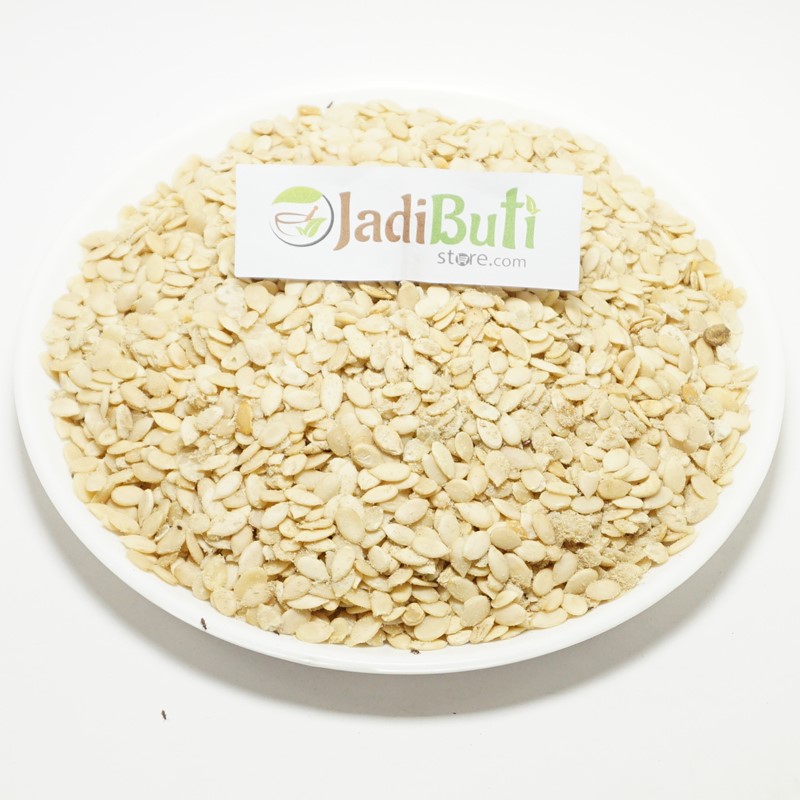
Tarbooj Beej – तरबूज बीज – Watermelon Seeds – Tarbooj Magaz
₹90.00 – ₹690.00Quick ViewTarbooj Beej (Watermelon Seeds)
Scientific name: Citrullus lanatus
Ayurvedic properties:
- Rasa (taste): Sweet, astringent
- Virya (energy): Cooling
- Vipaka (post-digestive effect): Sweet
- Guna (qualities): Light, dry
- Doshas (effect on humors): Pacifies Pitta dosha, may aggravate Kapha dosha in excess
Health benefits:
- Promotes kidney health
- Improves digestion
- Supports cardiovascular health
- Boosts immune system
- Enhances Physical health
- Promotes skin health
- Helps manage diabetes
- Supports bone health
- Reduces inflammation
- Aids in weight loss
- Promotes eye health
- Boosts energy and stamina
Precautions and contraindications:
- Excess consumption may aggravate Kapha dosha
- May cause digestive discomfort in some individuals
- Consult a qualified Ayurvedic practitioner before use
